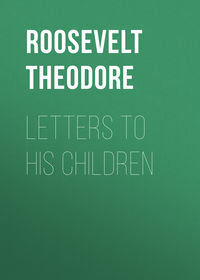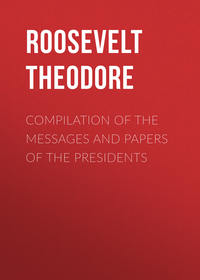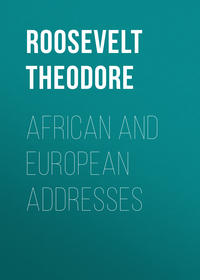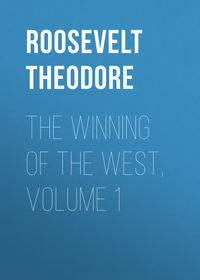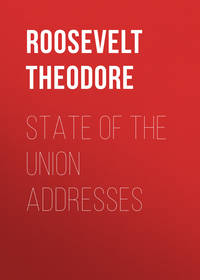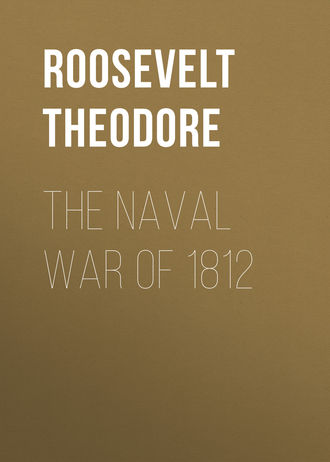 полная версия
полная версияThe Naval War of 1812
But admitting this is a very different thing from admitting that the British fought more bravely than their foes; the combatants were about on a par in this respect. The Americans, it seems to me, were always to the full as ready to engage as their antagonists were; on each side there were few over-cautious men, such as Commodore Rodgers and Sir George Collier, the opposing captains on Lake Ontario, the commander of the Bonne Citoyenne, and perhaps Commodore Decatur, but as a rule either side jumped at the chance of a fight. The difference in tactics was one of skill and common sense, not one of timidity. The United States did not "avoid close action" from over-caution, but simply to take advantage of her opponent's rashness. Hull's approach was as bold as it was skilful; had the opponent to leeward been the Endymion, instead of the Guerrière, her 24-pounders would not have saved her from the fate that overtook the latter. Throughout the war I think that the Americans were as bold in beginning action, and as stubborn in continuing it, as were their foes—although no more so. Neither side can claim any superiority on the average, though each can in individual cases, as regards courage. Foolhardiness does not imply bravery. A prize-fighter who refused to use his guard would be looked upon as exceptionally brainless, not as exceptionally brave; yet such a case is almost exactly parallel to that of the captain of the Macedonian.
Appendix D
In the "Historical Register of the United States" (Edited by T. H. Palmer, Philadelphia, 1814), vol. 1 p. 105 (State Papers), is a letter from Lieut. L. H. Babbitt to Master-commandant Wm. U. Crane, both of the Nautilus, dated Sept. 13, 1812, in which he says that of the six men imprisoned by the British on suspicion of being of English birth, four were native-born Americans, and two naturalized citizens. He also gives a list of six men who deserted, and entered on the Shannon, of whom two were American born—the birthplaces of the four others not being given. Adding these last, we still have but six men as the number of British aboard the Nautilus, It is thus seen that the crack frigate Shannon had American deserters aboard her—although these probably formed a merely trifling faction of her crew, as did the British deserters aboard the crack frigate Constitution.
On p. 108, is a letter of Dec. 17, 1812, from Geo. S. Wise, purser of the Wasp, stating that twelve of that ship's crew had been detained "under the pretence of their being British subjects"; so that nine per cent. of her crew may have been British—or the proportion may have been very much smaller.
On p. 117, is a letter of Jan. 14, 1813, from Commodore J. Rodgers, in which he states that he encloses the muster-rolls of H. B. M. ships, Moselle and Sappho, taken out of the captured packet Swallow; and that these muster-rolls show that in August 1812, one eighth of the crews of the Moselle and Sappho, was composed of Americans.
These various letters thus support strongly the conclusions reached on a former page as to the proportion of British deserters on American vessels.
In "A Biographical Memoir of the late Commodore Joshua Barney, from Autographical Notes and Journals" (Edited by Mary Barney, Boston, 1832), on pages 263, and 315, are descriptions of the flotilla destroyed in the Patuxent. It consisted of one gun-boat, carrying a long 24; one cutter, carrying a long 18, a columbiad 18, and four 9-pound carronades, and thirteen row barges, each carrying a long 18 or 12 in the bow, with a 32-pound or 18-pound carronade in the stern. On p. 256, Barney's force in St. Leonard's creek, is described as consisting of one sloop, two gun-boats, and thirteen barges, with in all somewhat over 500 men; and it is claimed that the flotilla drove away the blockading frigates, entirely unaided; the infantry force on shore rendering no assistance. The work is of some value, as showing that James had more than doubled the size, and almost doubled the strength, of Barney's various gun-boats.
It may be mentioned that on p. 108, Commodore Barney describes the Dutch-American frigate South Carolina, which carried a crew of 550 men, and was armed with 28 long 42's on the maindeck, and 12 long 12's on the spardeck. She was far heavier than any of our 44-gun frigates of 1812, and an overmatch for anything under the rank of a 74. This gives further emphasis to what I have already stated—that the distinguishing feature of the war of 1812, is not the introduction of the heavy frigate, for heavy frigates had been in use among various nations for thirty years previously, but the fact that for the first time the heavy frigate was used to the best possible advantage.
Appendix E
In the last edition of James' "Naval History of Great Britain," published in London, in 1886, by Richard Bentley & Son, there is an appendix by Mr. H. T. Powell, devoted to the war of 1812, mainly to my account thereof.
Mr. Powell begins by stating with naïf solemnity that "most British readers will be surprised to learn that, notwithstanding the infinite pains taken by William James to render his history a monument of accuracy, and notwithstanding the exposure he brought upon contemporary misstatements, yet to this day the Americans still dispute his facts." It is difficult to discuss seriously any question with a man capable of writing down in good faith such a sentence as the above. James (unlike Brenton and Cooper) knew perfectly well how to be accurate; but if Mr. Powell will read the comments on his accounts which I have appended to the description of almost every battle, he will see that James stands convicted beyond possibility of doubt, not merely of occasional inaccuracies or errors, but of the systematic, malicious, and continuous practice of every known form of wilful misstatement, from the suppression of the truth and the suggestion of the false to the lie direct. To a man of his character the temptation was irresistible; for when he came to our naval war, he had to appear as the champion of the beaten side, and to explain away defeat instead of chronicling victory. The contemporary American writers were quite as boastful and untruthful. No honorable American should at this day endorse their statements; and similarly, no reputable Englishman should permit his name to be associated in any way with James' book without explicitly disclaiming all share in, or sympathy with, its scurrilous mendacity.
Mr. Powell's efforts to controvert my statements can be disposed of in short order. He first endeavors to prove that James was right about the tonnage of the ships; but all that he does is to show that his author gave for the English frigates and sloops the correct tonnage by English and French rules. This I never for a moment disputed. What I said was that the comparative tonnage of the various pairs of combatants as given by James was all wrong; and this Mr. Powell does not even discuss. James applied one system correctly to the English vessels; but he applied quite another to the American (especially on the lakes). Mr. Powell actually quotes Admiral Chads as a witness, because he says that his father considered James' account of the Java's fight accurate; if he wishes such testimony, I can produce many relatives of the Perrys, Porters, and Rodgers of 1812, who insist that I have done much less than justice to the American side. He says I passed over silently James' schedule of dimensions of the frigates and sloops. This is a mistake; I showed by the testimony of Captains Biddle and Warrington and Lieutenant Hoffman that his comparative measurements (the absolute measurements being of no consequence) for the American and British sloops are all wrong; and the same holds true of the frigates.
Mr. Powell deals with the weight of shot exactly as he does with the tonnage—that is, he seeks to show what the absolute weight of the British shot was; but he does not touch upon the point at issue, the comparative weight of the British and American shot.
When he comes to the lake actions, Mr. Powell is driven to conclude that what I aver must be accurate, because he thinks the Confiance was the size of the General Pike (instead of half as large again; she mounted 30 guns in battery on her main deck, as against the Pike's 26, and stood to the latter as the Constellation did to the Essex), and because an American writer (very properly) expresses dissatisfaction with Commodore Chauncy! What Mr. Powell thinks this last statement tends to prove would be difficult to say. In the body of my work I go into the minute details of the strength of the combatants in the lake action; I clearly show that James was guilty of gross and wilful falsification of the truth; and no material statement I make can be successfully controverted.
So much for Mr. Powell. But a much higher authority, Mr. Frank Chiswell, has recently published some articles which tend to show that my conclusions as to the tonnage of the sea vessels (not as to the lake vessels, which are taken from different sources) are open to question. In the appendix to my first edition I myself showed that it was quite impossible to reconcile all the different statements; that the most that could be done was to take one method and apply it all through, admitting that even in this way it would be impossible to make all the cases square with one another.
Mr. Chiswell states that "the American tonnage measurements, properly taken, never could give results for frigates varying largely from the English tonnage." But a statement like this is idle; for the answer to the "never could" is that they did. If Mr. Chiswell will turn to James' "Naval Occurrences," he will find the Chesapeake set down as 1,135 tons, and the Macedonian as of 1,081; but in the American Navy lists, which are those I followed, the Chesapeake is put down as of 1,244 tons. A simple application of the rule of three shows that even if I accepted James' figures, I would be obliged to consider the Macedonian as of about 1,185 tons, to make her correspond with the system I had adopted for the American ships.
But this is not all. James gives the length of the Macedonian as 154 ft. 6 in. In the Navy Department at Washington are two plans of the Macedonian. One is dated 1817, and gives her length as 157 ft. 3 in. This difference in measurement would make a difference of 20 odd tons; so that by the American mode she must certainly have been over 1,200 tons, instead of under 1,100, as by the British rules. The second plan in the Navy Department, much more elaborate than the first, is dated 1829, and gives the length as 164 ft.; it is probably this that Emmons and the United States Navy lists have followed—as I did myself in calling the tonnage of the Macedonian 1,325. Since finding the plan of 1817, however, I think it possible that the other refers to the second vessel of the name, which was built in 1832. If this is true, then the Macedonian (as well as the Guerrière and Java) should be put down as about 120 tons less than the measurements given by Emmons and adopted by me; but even if this is so, she must be considered as tonning over 1,200, using the method I have applied to the Chesapeake. Therefore, adopting the same system that I apply to the American 38-gun frigates, the British 38-gun frigates were of over 1,200, not under 1,100, tons.
As for the Cyane, James makes her but 118 ft. and 2 in. long, while the American Peacock he puts at 119 ft. 5 in. But Lieut. Hoffman's official report makes the former 123 ft. 3 in., and the plans in the State Department at Washington make the latter 117 ft. 11 in. in length. I care nothing for the different methods of measuring different vessels; what I wish to get at is the comparative measurement, and this stands as above. The comparative tonnage is thus the very reverse of that indicated by James' figures.
Finally, as to the brigs, James makes them some ten feet shorter than the American ship-sloops. In the Washington archives I can find no plan on record of the measurements of the captured __Epervier_; but in the Navy Department, volume 10, of the "Letters of Master Commandants, 1814," under date of May 12th, is the statement of the Surveyor of the Port of Charleston that she measured 467 tons (in another place it is given as 477). James makes her 388; but as he makes the American Wasp 434, whereas she stands on our list as of 450, the application of the same rule as with the frigates gives us, even taking his own figures, 400 as her tonnage, when measured as our ships were. But the measurements of the Surveyor of the Port who examined the Epervier are corroborated by the statements of Captain Biddle, who captured her sister brig, the Penguin. Biddle reported that the latter was two feet shorter and a little broader than his own ship, the Hornet, which was of 480 tons. This would correspond almost exactly with the Surveyor's estimate.
It still seems impossible to reconcile all these conflicting statements; but I am inclined to think that, on the whole, in the sea (not the lake) vessels I have put the British tonnage too high. On the scale I have adopted for the American 44-gun and 38-gun frigates and 18-gun sloops like the Hornet and Wasp, the British 38-gun frigates ought to be put down as of a little over 1,200, and the British 18-gun sloops as of between 400 and 450, tons. In other words, of the twelve single-ship actions of the war five, those of the Chesapeake and Shannon, Enterprise and Boxer, Wasp and Frolic, Hornet and Peacock, Hornet and Penguin, were between vessels of nearly equal size; in six the American was the superior about in the proportion of five to four (rather more in the case of the frigates, rather less in the case of the brigs); and in one, that of the Argus and Pelican, the British sloop was the bigger, in a somewhat similar ratio.
This correction would be in favor of the British. But in a more important particular I think I have done injustice to the Americans. I should have allowed for the short weight of American metal on the lakes, taking off seven per cent, from the nominal broadsides of Perry and Macdonough; for the American ordnance was of exactly the same quality as that on the ocean vessels, while the British was brought over from England, and must have shown the same superiority that obtained on the sea-going ships.
Moreover, I am now inclined to believe that both the Guerrière and the Java, which were originally French ships, still carried French 18's on their main-deck, and that, therefore, about 20 pounds should be added to the broadside weight of metal of each. The American accounts stated this to be the case in both instances; but I paid no heed to them until my attention was called to the fact that the English had captured enormous quantities of French cannon and shot and certainly used the captured ordnance on some of their ships.
In writing my history I have had to deal with a mass of confused and contradictory testimony, which it has sometimes been quite impossible to reconcile, the difficulty being greatly enhanced by the calculated mendacity of James and some others of the earlier writers, both American and British. Often I have had simply to balance probabilities, and choose between two sets of figures, aware that, whichever I chose, much could be said against the choice. It has, therefore, been quite impossible to avoid errors; but I am confident they have been as much in favor of the British as the Americans; and in all important points my statements are substantially accurate.
I do not believe that my final conclusions on the different fights can be disputed. James asserts that the American ships were officered by cunning cowards, and manned to the extent of half their force in point of effectiveness by renegade British. I show that the percentage of non-American seamen aboard the American ships was probably but little greater than the percentage of non-British seamen aboard the British ships; and as for the charges of cowardice, there were but two instances in which it could be fairly urged against a beaten crew—that of the British Epervier and that of the American Argus (for the cases of Sir George Collier, Commodore Rodgers, Chauncy, Yeo, the commander of the Bonne Citoyenne, etc., etc., cannot be considered as coming under this head). James states that there was usually a great superiority of force on the side of the Americans; this is true; but I show that it was not nearly as great as he makes it, and that in dealing with the lake flotillas his figures are absolutely false, to the extent of even reversing the relative strength of the combatants on Lake Champlain, where the Americans won, although with an inferior force. In the one noteworthy British victory, that of the Shannon, all British authors fail to make any allowance for the vital fact that the Shannon's crew had been drilled for seven years, whereas the Chesapeake had an absolutely new crew, and had been out of port just eight hours; yet such a difference in length of drill is more important than disparity in weight of metal.
As a whole, it must be said that both sides showed equal courage and resolution; that the Americans usually possessed the advantage in material force; and that they also showed a decided superiority in fighting skill, notably in marksmanship.


